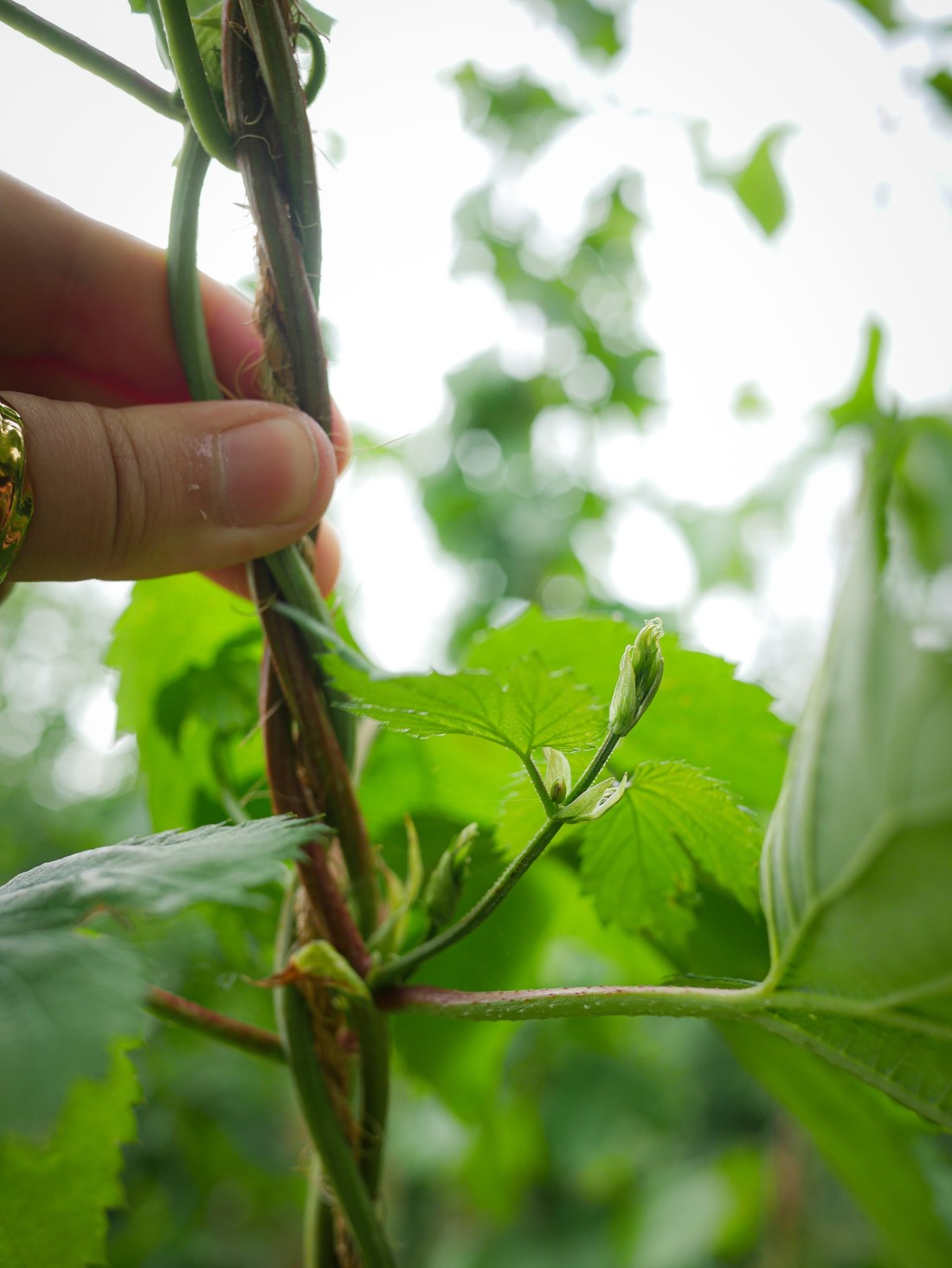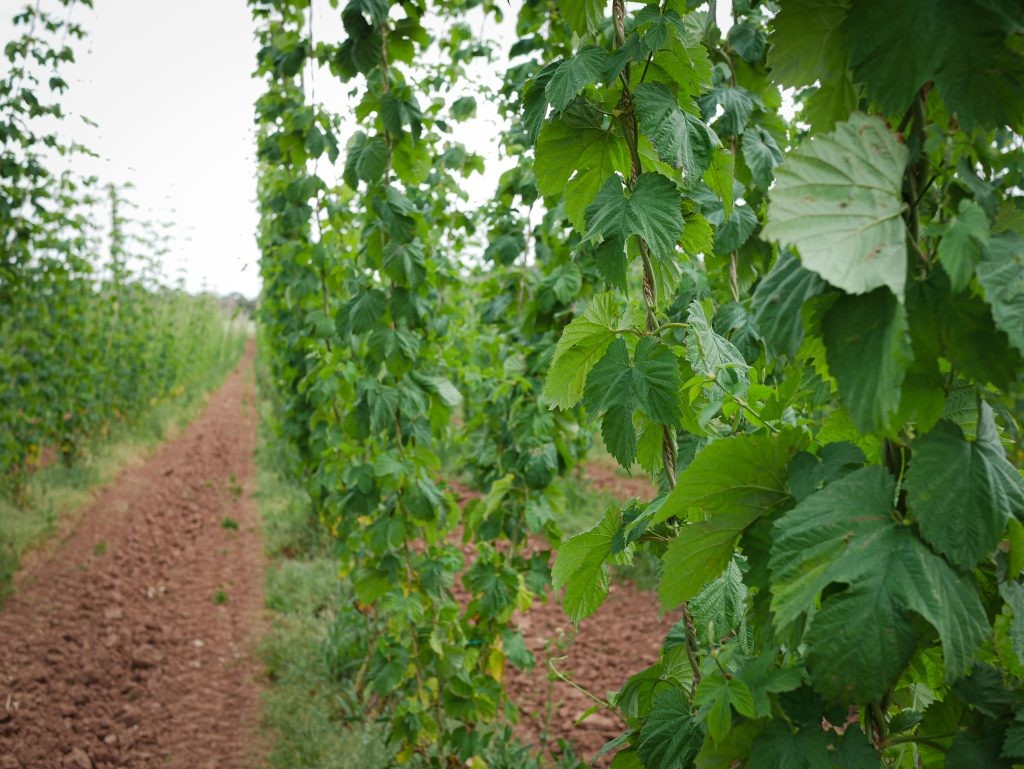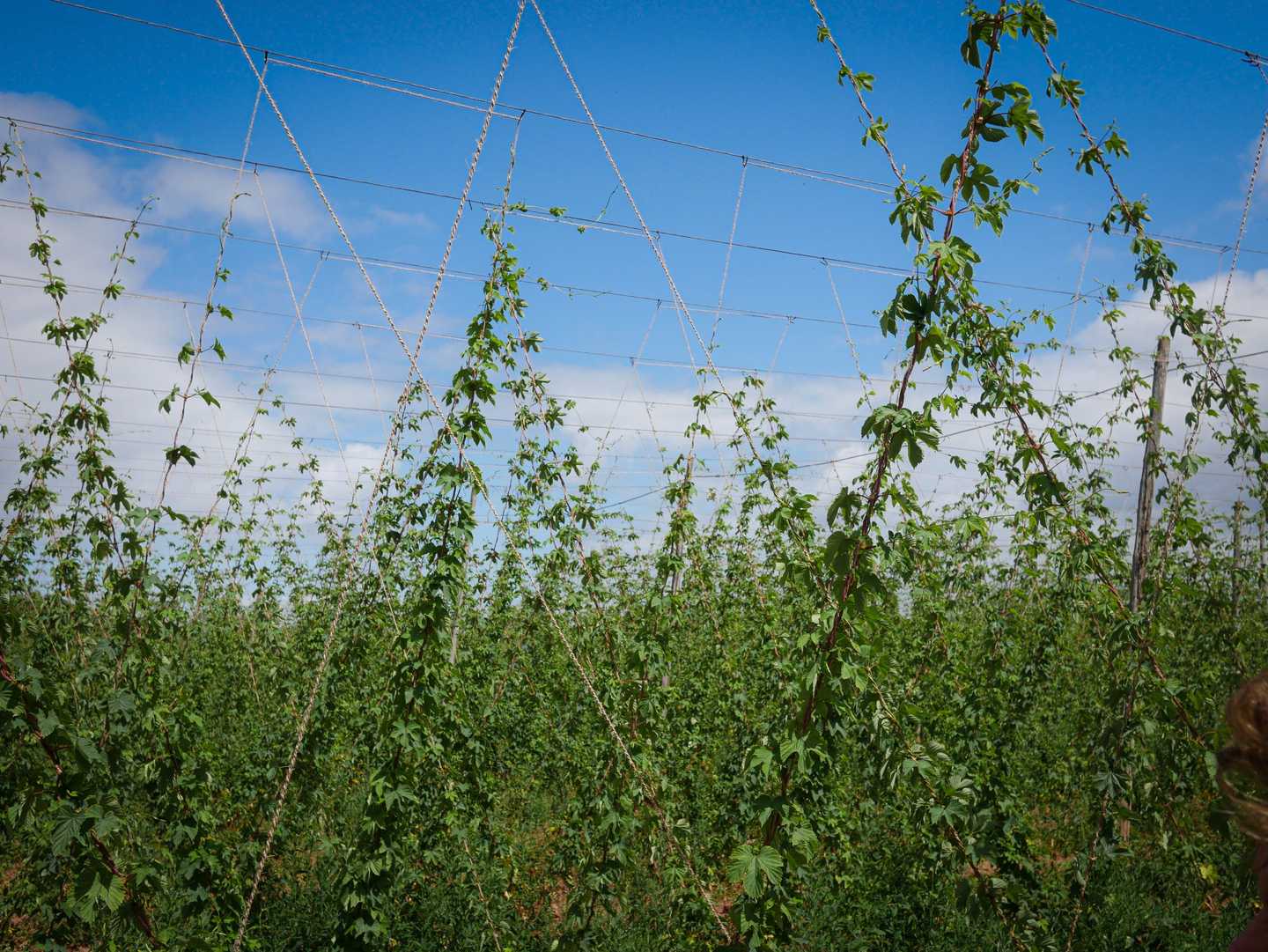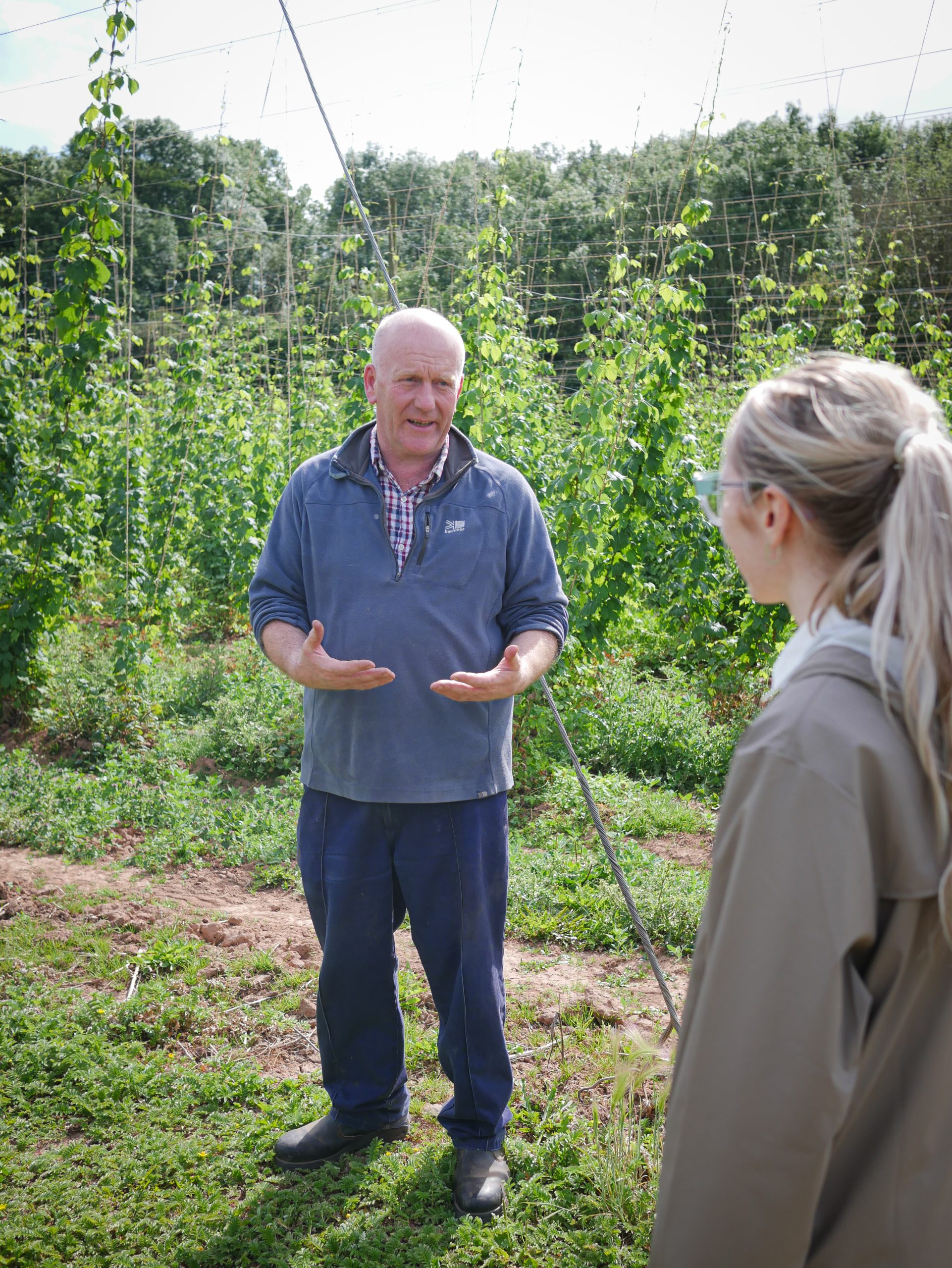What are hops?
They are the fruit of the hop plant. Hops grows on bines (similar to vines for grapes) that are cultivated each year with a main growth period from spring to summer and are trained to grow up poles through the use of tall strings. Some will grow straight up and other will be directed on an angle. The strings are put up at an angle that best suits the hop variety being grown to ensure maximum light can reach the crop. They’ll wind around until reaching the top of their structures towards the end of summer. The hop grows on off-shoots of the bine called ‘laterals’ which look like long stringy stalks. The more laterals which grow on a plant the better yield of hops the plant should produce. The positioning of these laterals on the plant matters too, if there are too many too high – this will affect sunlight getting to the lower parts of the plant. When the plants first grow each year, the farmers will often cut the first growth back, to encourage re-growth and the production of laterals.

Is it difficult to grow hops?
Like us humans, they need the right conditions to develop and grow, and each variety of hop varies in its level of attention required by the farmer. Other things such as the weather, pests, soil and disease in the surrounding land all determine crop outcome too. The farmers we met explained about the difficulty and devastation that some soil borne diseases can have on their crops. A very common soil disease hop plants are susceptible to is called ‘ Verticillium wilt’.
Some ‘wilt’ diseases can mean that all summer their plants are looking healthy and great, then one day they might wake up, walk the land and find their crop has turned brown and died. This can be a real blow to their year’s work. The constant monitoring of the bines and destruction of infected plants can save plants. But sometimes when the soil is badly infected, the soil then needs to be rested for years after until the soil becomes wilt free and the crop can grow again.
When we visited the farmers at the end of June, they were concerned their crops weren’t as tall or high as they should be and were hoping for some sunshine and warm rain to give them a burst of growth they needed for their harvest. Signs of a strong looking crop involves lots of laterals all growing towards each other. However, what the farmers don’t want, is them intertwining. If that happens it can create a shadow underneath the plant which promotes mildew and can prevent sunlight reaching the lower leaves.
So when are hops used in beer production?
Some hops are called ‘Bittering Hops’ and some hops are ‘Aroma Hops’. The bittering hops are added early into the boil part of the brewing process and will influence the bitterness of the beer. This can sometimes be referred to as an ‘alpha hop’.
Aroma hops are added towards the end of the boiling part of the brewing process and add flavour and aroma to the beer.
At Robinsons, Goldings is a popular British hop we use which we utilise in both the early and late part of the boil as it gives us both a great bitterness and a lovely aroma.

How are hop farmers innovating?
Hops are grown all over the world. England has a great variety of hops and the farmers at Charles Faram Co-operative are always testing out new experimental plants to see if they can bring a new variety to market.
Each of the three hop farmers we met were innovating and regenerating in their own ways. Simon was using other crops such as maize to provide the soil with additional nutrients and nitrogen. Tom was allowing clover and annual meadow grass to grow, which then once cut back, would be left to break down and provide nutrients back to the soil. This also provided a cover to the soil which allowed a certain level of moisture to be retained in the soil to prevent plant drought.
Acknowledgements: We’d like to say thank you to Charles Faram Hop Merchants for arranging the day for us and an even bigger thank you to Richie, Tom and Simon, the hop farmers who welcomed us onto their farms and spent time sharing their livelihood and knowledge with us.






